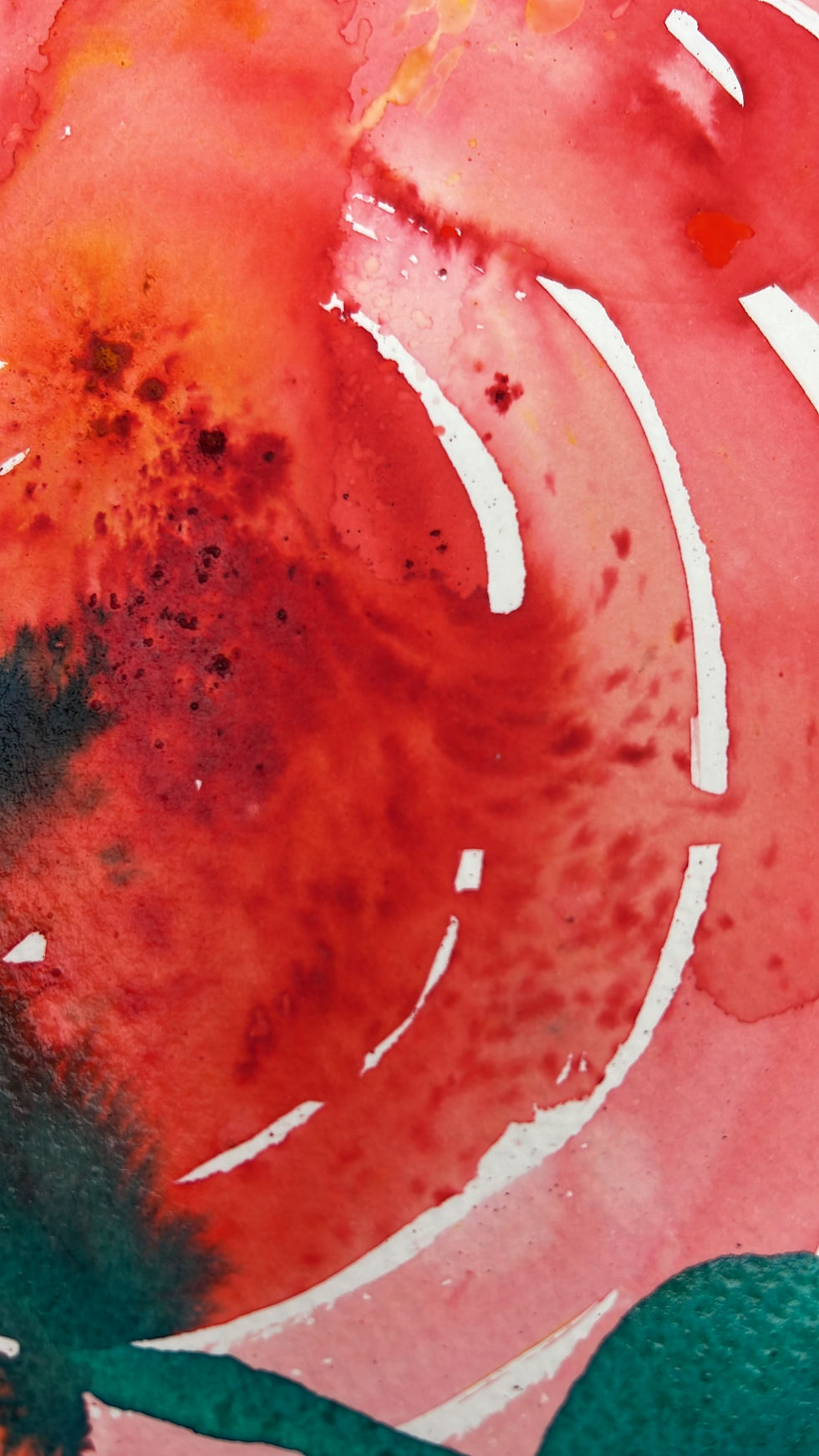What is Art Therapy?
- Debi Magonet

- Sep 12
- 4 min read
Updated: Sep 26
Art therapy is a form of psychotherapy that uses creativity and the arts alongside talking. You might simply be looking for a therapist to talk through your problems and of course, we can do that.
However there is a kind of magic in recognising the unconscious and giving it expression. Our thoughts, feelings and emotions are not linear and don’t always begin with words. Often they are held in the body as a jumble of sensations, colours, shapes, textures, or sounds. Art therapy works with these languages of the body and imagination, opening a way to explore at a deeper and more profound level.
Do I need to be good at art for art therapy?
Not at all. There is no requirement to be good at art, or to have any training or skill. Art therapy is not about producing beautiful paintings. Our embodied senses and thoughts often emerge in ways that are raw, messy or even uncomfortable and that is just as valid. In art therapy, the focus is on expression and meaning, not on making something “good.”
What can art therapy help with?
Art therapy can support people through many different challenges from anxiety and depression to trauma, grief and relationship difficulties. I have worked with a number of diagnoses within the NHS and private psychiatric hospitals too. Ultimately, it begins with sitting together and creating a safe space to explore whatever is present.
I am especially interested in life transitions the moments when we feel ourselves moving from one stage of life to another. This might include perinatal experiences of pregnancy, birth, or parenthood, but also other transitions such as loss, illness, or times of change and uncertainty. Art therapy offers a way of making sense of these passages and finding new possibilities within them.
What happens in the first art therapy session?
The first session depends entirely on what you need to feel safe and have permission to begin. For some people, that means asking questions and being introduced to the way of working. For others, it may feel right to start sharing some history or to think together about aims and objectives.
There is no pressure to create anything until you feel ready. The focus is on building trust and establishing the foundation for the work to unfold.
How is art therapy different from talking therapy?
The theory of change requires creativity. For creativity to shine, we need safety and we need ways to access what the body wants to communicate and shift.
Art therapy, with its seven modalities (including drawing, painting, movement, drama, poetry, sand tray, and sound), opens up more ways of working than words alone. Unlike talking therapy, which follows a more linear, verbal process, art therapy makes space for what is unspoken, embodied and unconscious to emerge. This allows us to explore experiences at a deeper, more flexible level.
Why I believe in art therapy
I genuinely believe in the alchemy of art, the way creativity can transform what feels stuck or hidden. So much of our inner life is non-verbal, carried in the body and the unconscious. Art therapy allows these processes to be expressed, shared and witnessed without needing words.
I do this work not only to stay connected to my own creativity but also so my clients can find their depth and experience the power of non-verbal expression. This is where I see real change and healing take place.
Who is art therapy for?
Art therapy is for anyone who feels a desire to connect with this way of working. You don’t need to see yourself as “artistic” to benefit.
People come to art therapy for many reasons, to find support with anxiety, depression, trauma, or grief; to explore perinatal experiences and parenthood; or simply to reconnect with creativity and a deeper sense of self. Whatever brings you, the process adapts to meet you where you are.
What are the benefits of art therapy?
The shifts that happen in art therapy are deeply personal. For some people, the benefit may be simply being able to sit with an issue without needing to put it into words. For others, it might mean opening out a trauma and beginning to see it from a new perspective.
I work in a trauma-informed way, so we always go at the right pace for you. Sometimes this means small, gentle steps; sometimes it means finding ways to support larger changes. I have supported women through pregnancy and birth, as well as people navigating other major life events and transitions. Whatever the scale, the changes are about what matters most to you.
Where can I have art therapy?
I offer art therapy in Berkhamsted, Hertfordshire, where I work with clients in person and I also offer online art therapy sessions for those further afield. Both formats provide a safe and confidential space to explore your experiences, whether you prefer the grounded presence of being in the room together, or the accessibility of working from home.
The power of art
I genuinely believe in the power of art. I believe it can move mountains. Long before the neurological research papers, wisdom about the healing qualities of art has been carried in our ancient traditions.
As Nona Orbach reminds us, every material holds its own unique presence, clay, paint, charcoal, paper, each with its own texture, weight and spirit. Choosing and working with materials is never just coincidence. Whether it is kneading, tearing, sketching, or smearing, each act reflects something of our inner world at that moment in time.
For me, this is the essence of art therapy: a meeting between material, action, and meaning. It is in this space that something shifts, sometimes quietly, sometimes profoundly. This is why I continue to trust in the alchemy of art, and in its power to help us discover new connections with ourselves and with others.





Comments